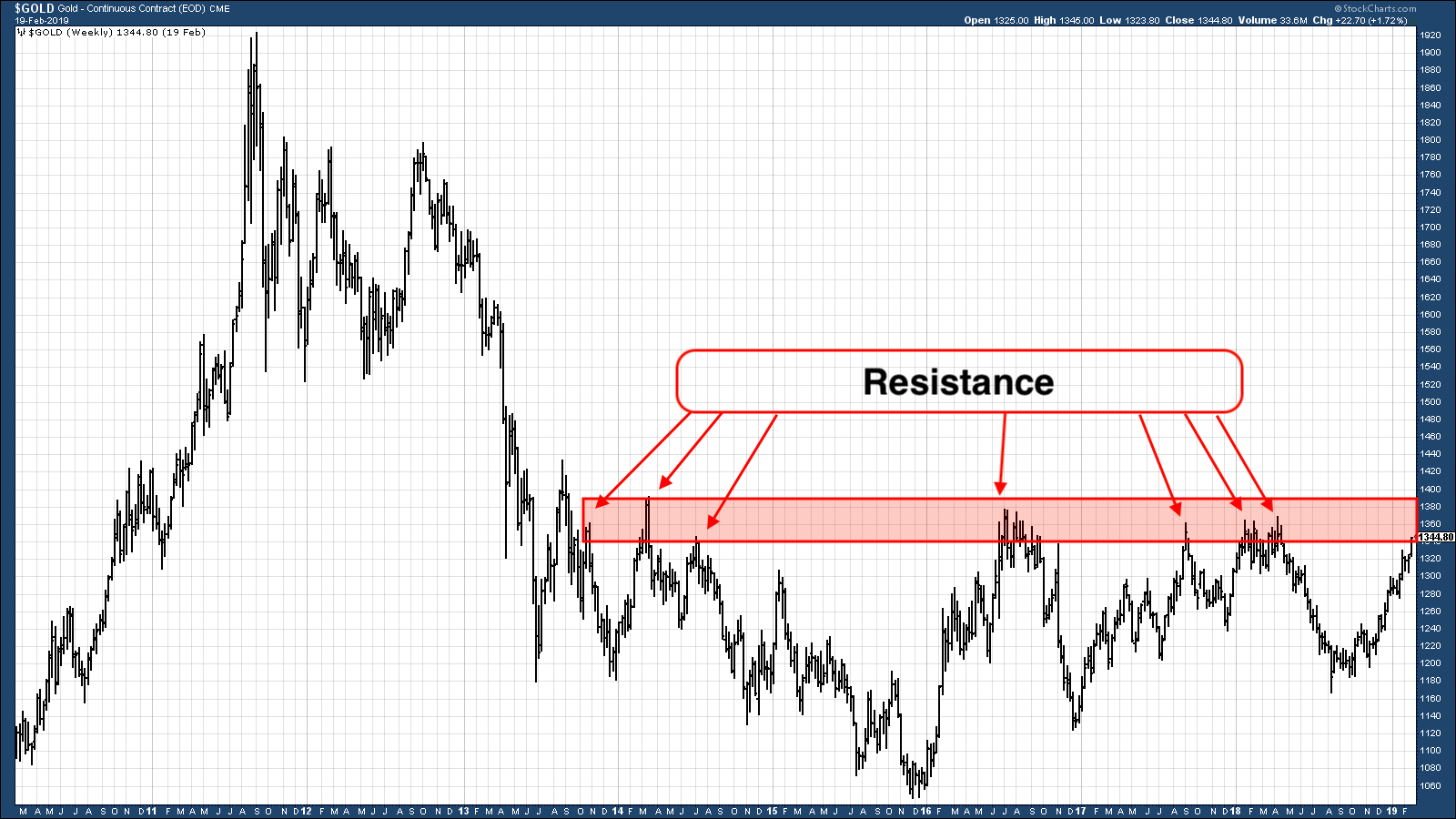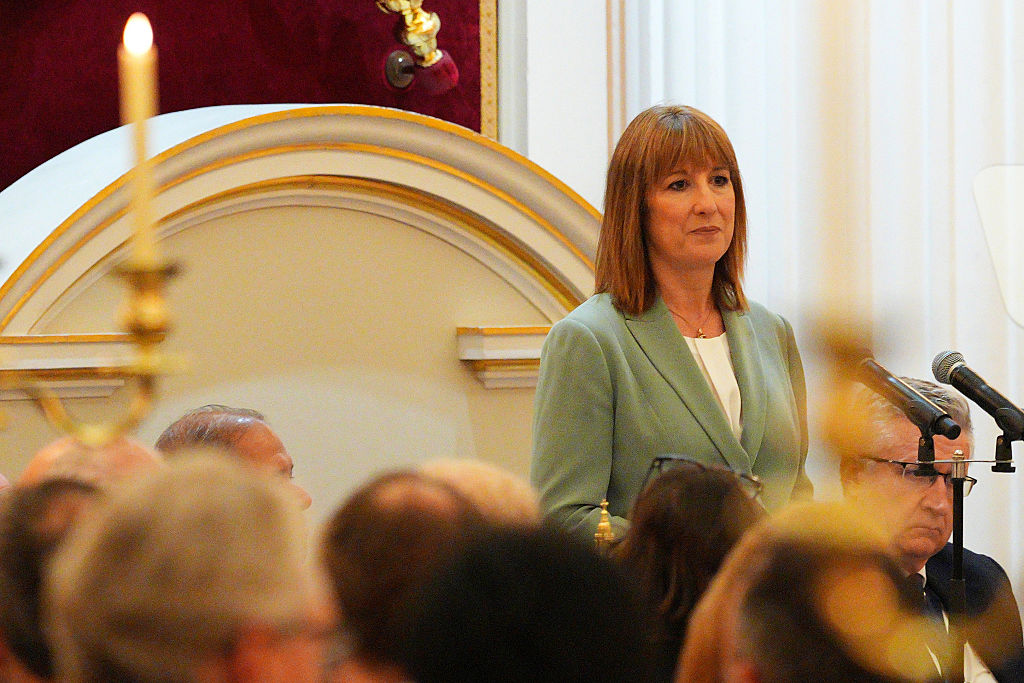Gold – here’s why it just might be different this time
The gold price is creeping higher. And lot of smart people are getting bullish on gold. Are they right? Or is it another false dawn? Dominic Frisby finds out.


Gold has been quietly (by its standards) creeping up.
Our summer trade idea to buy with the aim of offloading in the winter for a 10%-20% gain has hit the target. As I write it stands at $1,344 an ounce.
But now the bulls are coming out of the woodwork.
Subscribe to MoneyWeek
Subscribe to MoneyWeek today and get your first six magazine issues absolutely FREE

Sign up to Money Morning
Don't miss the latest investment and personal finances news, market analysis, plus money-saving tips with our free twice-daily newsletter
Don't miss the latest investment and personal finances news, market analysis, plus money-saving tips with our free twice-daily newsletter
Is it time to offload? Is this another false dawn or has this run got legs? These are the questions we ask in today's Money Morning.
It looks as though gold will have a hard time getting to $1,400
I want to start with a chart of gold showing, simply, how much resistance there is in the $1,360-90 area.
Though gold peaked in September 2011 at $1,920 an ounce, the bear market only really got going from late 2012 when gold went on a downward run from around $1,800, through $1,500, all the way down to $1,180 by mid-2013.
Since mid-2014, the $1,360-£1,390 area, where I have drawn the red band below, has been resistance. Gold has got up there some seven times or more over the period (see the red arrows), but each time it has failed to push through. The $1,360 area, specifically, has been especially resistant.
So I will start by saying this: if gold can get through $1,360 and it looks like we are closing in on that level and up above $1,400, that will be a major psychological barrier broken. The action of the last five years would suggest that it probably won't, at least not at first, but who knows maybe this time it's different.
Gold has traced out a huge, multi-year inverted head-and-shoulders pattern, if you attach any importance to that kind of thing.

I had lunch yesterday with my old pal, and long-time silver bug, Ned Naylor-Leyland, who now runs the Merian Gold and Silver Fund which has more than $300m under management. Ned always talks up silver, but yesterday he was more excited about precious metals than I have heard him in a long time.
I kept arguing with him. "This is another false dawn", I said (playing devil's advocate). "Come on Ned, we've been here before." Whereas once he might accept my cynicism towards pro-gold narratives, this time he just wasn't having it.
"The forward guidance by the Fed with respect to rate hikes, normalisation and the unwinding of the central bank's balance sheet it's changed. The constant hawkish promise gave us seven years of biblical famine for gold.
"But now this new neutral or dovish stance is a genuine shift in momentum, and it will stay in place for some time. It is almost inconceivable that the Fed could go back hawkish again any time soon after such a clear about turn in December and January. This gives precious metals clear water to trade higher again on a secular basis."
That word "secular" always catches my attention. It's fund-manager-speak for this thing has legs.
A lot of smart people are getting bullish on gold
Fund manager (and occasional Moneyweek contributor) Charlie Morris, another guy who gets gold, (but is no perma bull), also keeps getting in touch. "I'm bullish on gold", he keeps saying. "First time in ages. And I want everybody to know. The macro's right. Can you re-tweet me?"
Ross Norman, who runs bullion dealer Sharps Pixley has also been on the blower several times. Ross is a bullion dealer, so it is easy to accuse him of having a vested interest in talking up gold, but he is also the LBMA's top gold forecaster, and one should heed what he says.
Ross is drawing multiple comparisons between now and 1999-2001, when gold hit a "secular" low of $250. "There are so many parallels," he says. But yesterday he was emailing me specifically about physical supply.
It is tight, he says. Demand from investors is high, while coins and bars in the UK are in short supply. As a result, Sharps Pixley is speaking with the major Swiss refineries for additional supplies. It is also launching a media campaign inviting anybody with old bars or coins they might want to sell, offering to pay 99% of the fine gold content.
This is not typical of conditions you find in a bear market.
"Sharps Pixley estimates that there is only about two tonnes of small bars and coins in the UK," he says. "Given the UK population is 66 million, this suggest there is only £1 per person readily available at any one time. Should an economic "event' occur, then we would expect demand would overwhelm the limited supplies which would dry-up overnight. For example, should there be a no-deal Brexit then we would anticipate local demand for physical gold would quickly absorb all the available small denomination gold."
For me though, the sea change is the reports of extraordinarily high gold demand from central banks. I don't think central banks are what you would call "smart money", but that they are buying is telling: it is a recognition that gold has a role as money.
The extremely powerful narrative that gold, not the US dollar, is the international reserve currency could be starting starting to emerge again. The World Gold Council notes that central banks added 651.5 tonnes to official gold reserves last year, the highest yearly total of central bank purchases since 1971, when the US came off the gold standard. And the second-highest yearly total on record.
So a secular change in Fed-speak, a shortage of physical gold (in the UK at least), extraordinary central bank buying. Could it be that gold is embarking on a proper bull market? It's possible. This run certainly feels different to those of the last four or five years.
But your author has been there before. I'm long gold, as always. But I'll believe it when I see it.
Get the latest financial news, insights and expert analysis from our award-winning MoneyWeek team, to help you understand what really matters when it comes to your finances.
Dominic Frisby (“mercurially witty” – the Spectator) is as far as we know the world’s only financial writer and comedian. He is the author of the popular newsletter the Flying Frisby and is MoneyWeek’s main commentator on gold, commodities, currencies and cryptocurrencies. He has also taken several of his shows to the Edinburgh Festival Fringe.
His books are Daylight Robbery - How Tax Changed our Past and Will Shape our Future; Bitcoin: the Future of Money? and Life After the State - Why We Don't Need Government.
Dominic was educated at St Paul's School, Manchester University and the Webber-Douglas Academy Of Dramatic Art. You can follow him on X @dominicfrisby
-
 Mansion House speech: Reeves sets out to foster investing culture
Mansion House speech: Reeves sets out to foster investing cultureAt her annual Mansion House speech, chancellor Rachel Reeves vowed to cut back on regulatory red tape to boost growth, and get Brits investing in the stock market
-
 Anna Wintour: fashion’s ice queen steps down as Vogue editor-in-chief
Anna Wintour: fashion’s ice queen steps down as Vogue editor-in-chiefAnna Wintour is quitting her role as editor-in-chief of American Vogue following a near-four-decade reign. But true to form, she will not be relinquishing control entirely.
